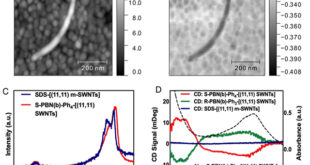Significance
Recently, naturally occurring processes such as biomineralization processes have inspired the development of new functional materials with great potential of enhancing thermal stability and organic solvent tolerance of biomacromolecules applications. This has led to the development of several biomimetic mineralization approaches such as inorganic minerals for protecting bioactive macromolecules. Unfortunately, considering the difficulty of fusing the organic and inorganic substances, the development of alternative strategies for enhancing the interactions between the organic and inorganic components for effective biomineralization is highly desirable. Recently, researchers have identified the use of organic-inorganic hybrid materials as a promising solution.
In particular, stable metal-organic frameworks developed from organic and inorganic components have enabled good interaction between the biomolecules and the external environment. Additionally, they have a high affinity towards the organic moieties that further improves their biomimetic properties. This also explains their abundant use in various enzymatic catalyzes. The major drawback, however, remains inhomogeneous mixing that leads to heat- and mass transfer limitations due to the interfacial contact between the catalysts and substrates. In a recently published literature, Pickering interfacial catalysis has exhibited the potential of addressing the aforementioned challenges by improving its efficiency in terms of diversity and stabilization when combined with the metal-organic frameworks biomimetic mineralization.
To this note, researchers at the South China University of Technology: Dr. Liang Qi, and Professor Zhigang Luo (corresponding author) together with Dr. Xuanxuan Lu from The State University of New Jersey developed a new biocatalytic system from a combination of metal-organic frameworks biomimetic mineralization and Pickering interfacial system with the aim of improving the lipase catalysis and recycling in organic media. Specifically, zeolitic imidazolate framework-8 (ZIF-8) was chosen due to its high surface area and high chemical and thermal stability while lipase from Candida rugosa (CRL) was used as a representative enzyme. Their research work is currently published in the research journal, ACS Sustainable Chemistry and Engineering.
In brief, the research team commenced their work by synthesizing the porous Candida rugosa -loaded ZIF-8 composite through biomimetic mineralization process. Secondly, they examined the contribution of the Candida rugosa in the mineralization process in terms of the size, crystallinity, and structure of the resulting composite. To validate the study, the synthesized composite was used as a surfactant stabilizer for the generation of the Pickering emulsions and its effects on the oil-water interface was examined based on the surface chemical properties.
The authors observed that the surface-embedded Candida rugosa played a significant role in modulating the mineralization process. For instance, it adjusted the morphology and surface chemical characteristics of the composite that further affected the stability of the emulsions. On the other hand, it was worth noting that the highest catalytic efficiency was achieved in a stable oil-in-water Pickering emulsion. This was attributed to the different hydrolysis involved in small and large substrates as well as the high integrity of the oil droplets. Furthermore, new interfacial hydrolysis based on the Candida rugosa -loaded ZIF-8 composites was developed by the research team at the South China University of Technology led by Professor Luo and used as Pickering interfacial biocatalysts and the small discrepancy observed was due to the substrate’s selectivity. Impressively, this interfacial biocatalysis presented versatility and could be employed for transesterification by only changing the encapsulated enzyme (lipase B from Candida sp. expressed in Aspergillus). In general, the excellent catalytic performance exhibited highlighted the potential application of interfacial biocatalytic systems, which will have important application in many industries, such as food, chemistry, pharmacy.

Reference
Qi, L., Luo, Z., & Lu, X. (2019). Biomimetic Mineralization Inducing Lipase–Metal–Organic Framework Nanocomposite for Pickering Interfacial Biocatalytic System. ACS Sustainable Chemistry & Engineering, 7(7), 7127-7139.
Go To ACS Sustainable Chemistry & Engineering Advances in Engineering Advances in Engineering features breaking research judged by Advances in Engineering advisory team to be of key importance in the Engineering field. Papers are selected from over 10,000 published each week from most peer reviewed journals.
Advances in Engineering Advances in Engineering features breaking research judged by Advances in Engineering advisory team to be of key importance in the Engineering field. Papers are selected from over 10,000 published each week from most peer reviewed journals.




